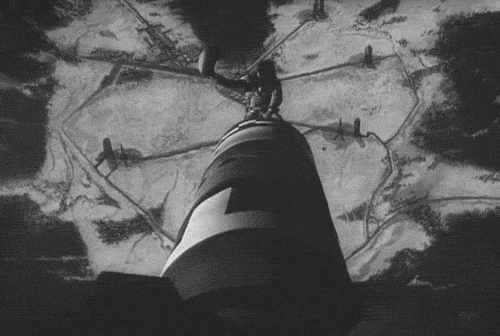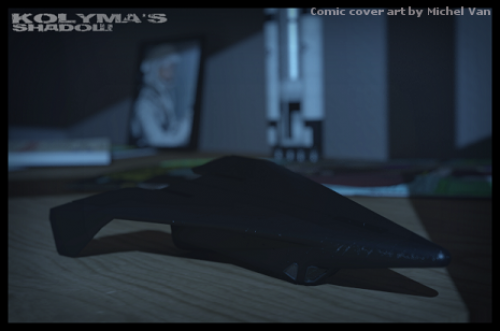Hi everyone, sorry I’ve been a bit slow responding recently, I’ve had lots on. Part-III is currently hovering around the 75% mark, so I’m still hoping to get it out there by the end of the year (I have a few days holiday still to use up, so there may be some long weekends writing ahead!). In the meantime…
Shevek23 said:
I'm not so sure that the logic of returning a reusable moonship to a LEO station is very compelling, considering that unless we are talking about making it aerobrake on the upper atmosphere to reduce the near-escape-velocity speed of a lunar transfer orbit to LEO down to the LEO orbital speed (in one pass, not dozens as has been attempted OTL for space probes to planets and moons with atmospheres) we have to use rockets to do the job. Since the delta-V is the same as the initial TLI burn for the whole stack or craft from the space station to the Moon (or many other distant destinations) and that's high, over 3 km/sec, carrying the propellent necessary for that final burn of the mission is a serious penalty.
[...]
That’s a
very thorough analysis! Without going into similar detail, my impression is that space stations and waypoints are most valuable as part of an overall system for continuous, long-term missions. Even more so if they can be supported from both ends (e.g. with lunar-sourced propellant). However, getting support for that sort of infrastructure is difficult to say the least. If the best you can hope for is a political shoot-for-glory type mission, then simple, throwaway craft are significantly cheaper to develop - and if you’re only going to fly them a few times, the recurring costs are not so important.
Of course, leveraging your current capabilities also makes a lot of sense (if you can hide your development funding as an upgrade to an existing system, so much the better!).
Bahamut-255 said:
Then there's the issue of Cryogenic Vs. Hypergolic. Hypergolic was favoured for the CSM/LEM since it could not only keep for a long time, but used a very simple ignition system - just let them touch - which made for a simple, reliable system which was considered safer than relying on the active ignition system needed for a non-toxic cryogenic engine.
I think this is a very good (and often overlooked) point. Lower performance is often preferable if it offers greater reliability, especially in situations where you’re trying something that’s never been done before.
ITTL of course, the US as of 1968 have not yet performed a spacewalk, nor even a true orbital rendezvous, so mission architectures requiring large numbers of rendezvous and docking events will be received with a sceptical eye, for now at least.
Bahamut-255 said:
In short, there is absolutely no simple way to pull it off. Either a lot of smaller component launches to assemble the stack in LEO, a few large component launches, or make a very large LV to do the whole thing in one launch.
I must admit to being a fan of the slightly unfashionable “Build ‘em Big” approach to launching exploration-class missions. The best place to screw up any system is its interfaces, so having any more than is absolutely necessary should be avoided. It’s a lot easier to integrate and test something on the ground, with air, gravity and cheap local services for your workforce, than try to wire it up on orbit.
Of course, if you’ve not got any plans for building that big chunk, it’s kind of pointless paying to develop a rocket to launch it, but that’s a discussion for another forum

Bahamut-255 said:
But if I have to make a guess, I think the LEO Stations will be preceding the Manned Lunar Missions.
We’ll keep a note of that prediction

Of course, it could well depend on what you count as a Station. The Dynasoar Experimental Lab is already in development, as is the Dynasoar Orbital Lab, while no lunar missions have been formally proposed. But then again, as we know from OTL, there is a significant difference between “in development” and “flown”...
Michel Van said:
Rockwell analysis show that over 5 days, 25 tons of LH2 would boil off out stage in orbit. (solar radiation and "warmer" Lox tank)
around 20 tons of Lox will boil away over 163 day !

fasquardon said:
Seeing this quoted by Shevek also gave me another thought: It is hard to maintain things in space. Doubly so with the technology of the 60s and 70s. How many round trips would a moonship be able to manage without getting dangerously unsafe?
Well, currently the ISS crew are spending something over 80% of their time maintaining the station, whilst in the last days of Mir it was practically 100% (and even then the safety of the station was a serious concern that helped decide to de-orbit it). I suspect that the level of technology of the ‘60s and ‘70s wouldn’t be too big a factor, as the extra time needed for maintaining less sophisticated components would be offset by the fact that the spacecraft are overall less complex, so the 75% mark is probably about right (assuming of course a regular supply of spares). That’s also a lot of crew training time that goes into spacecraft systems repair instead of mission objective skills, reducing the overall effectiveness of the system to deliver its objectives even during the 20-25% of crew time available to support it.
For a reusable lander, I imagine this could be more complicated as there are a lot more critical components that would be difficult to service. I’m thinking especially the engines and the landing gear, which have to work perfectly each mission and have tough operating conditions. For the landing gear, one of the most common designs for absorbing landing shocks is a crushable structure within the legs, but this cannot be re-used, so something else would be needed - or you replace the whole gear for each landing!
So a lot of design effort would need to be focussed on simplifying maintenance as much as possible, which means big development costs and long development times.
brovane said:
I recently read through a good paper by ULA published in 2009 called "A Commercially based lunar architecture" Deals a lot with Propellant depots and designs and moving fuel to Orbit and then to L2.
Thanks for sharing the link, brovane - it is indeed an interesting read. I remember seeing this a few years back and it definitely provides food for thought.
Their CGI sucks though

marathag said:
For reusable and good 'fuel' storage characteristics, there is always Orion.

Michel Van said:
oh yeah that Atomic Bomb drive
just a question: under Nixon administration in 1960s ITTL
how has Orion Evolved ?
under JFK the USAF wanted to build Huge Battleship size Orions, but Kennedy and McNamara back off in horror on the idea alone.
As mentioned previously, ITTL Orion died in its crib:
One batsh*t crazy project I will comment on is the Orion nuclear-pulse rocket, which IOTL was dropped by Los Alamos and rejected by the Air Force in the late ‘50s to be picked up by ARPA. ITTL it is also rejected by the Air Force in the late ‘50s and picked up by… no-one! The concept dies before even the “Putt-putt” prototypes are flown, though doubtless the idea will re-surface at some point after declassification, just as IOTL.
Then there’s the Partial Test Ban Treaty, signed in October 1961 ITTL, which forbids nuclear explosions in space, so beyond a few theoretical DRA studies and the odd article in the
Journal of the British Interplanetary Society, the concept has pretty much disappeared.
Michel Van said:
and SLAM aka PLUTO a nuclear Doomsday weapon?,
A Cruise Missile with nuclear powernd ramjet that dash at mach 3 low over the ground an drop 28 nukes over USSR.
It's nuclear engine PLUTO was test with success in Nevada desert, planned for first Test flight of SLAM was planed at Johnson Atoll as McNamara stop the program.
Also dead, thank goodness. As well as it’s bombs, PLUTO was planned to criss-cross Soviet farmland at Mach-3 at 100ft for a couple of weeks, wiping out structures with its sonic boom and poisoning the land with its radioactive fallout. That’s just not going to be politically acceptable, especially considering the military value is probably less than the ICBMs already being fielded, with PLUTO being much more expensive to develop and deploy. It doesn’t take a McNamara to shoot that one down.
Michel Van said:
I guess that Nuclear power Bomber have same problem ITTL
danger of Reactor get damage during crash and radiation shielding problem for crew…
I understand the main issue with nuclear bombers is having them able to lift the weight of the necessary shielding plus an actual payload. Well, that and the radioactive exhaust plume. Once mid-air refuelling is perfected, the minor advantages of a nuclear jet are pretty much wiped out, so no, that won’t be surviving either.
arkades said:
On space tugs , a craft dedicated to orbit-to-orbit seems a good idea but you need to have a serious exploration program (like in "2001") to really benefit from it.
A NERVA like reactor seems the best choice, but you must launch the propellant regularly, which must be kept in orbit (in a propellant depot) between mission.
To me it implies a moon base and making rockets by the dozen.
Michel Van said:
the Space tug was weird Concept, NASA wanted one spacecraft for multitude of mission
launch satellites from LEO to GEO, as Pod to repaire Satellite, as tug tor Cargo and Parts for Space station or Spaceships
or as lander for Moon base or autonom lunar outpost up to 90 day or lander for heavy cargo on moon.
and operational for 2 years in orbit.
I agree with you guys on the usefulness of space tugs. They’re useful as part of a large, permanent infrastructure, but not so great if you only need a few bespoke missions.
For using NERVA on them… I can’t see the gains being worth the hassle. Apart from political issues involved in launching nuclear reactors, it introduces a lot of operational concerns with only being able to approach and dock with the active tug from certain directions, the risk of unintentionally disrupting passing satellites (or intentionally perhaps, if you want an ASAT with plausible deniability), etc. For me, the best option for a tug is a solar-electric ion engine for non-time critical payloads (and those that can handle multiple Van Allen - sorry,
Vernov belt passes).
I suspect the NASA concept for a nuclear tug was largely driven by von Braun’s efforts to sell their development in support of his Mars mission. He needed nukes for Mars, so came up with other missions for them as part of his sales pitch.





